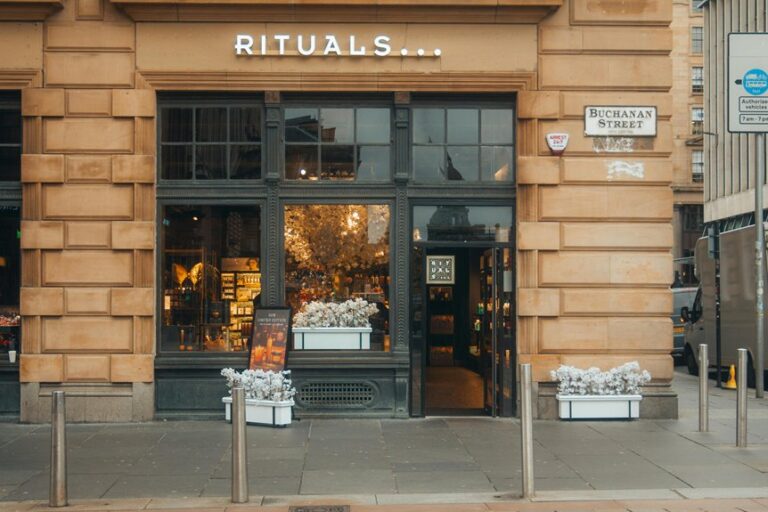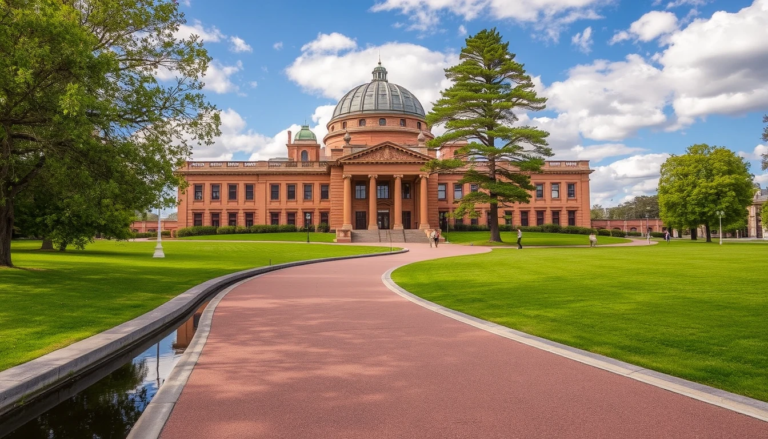Experience Tranquility at Rengejo-In Temple
Rengejo-In Temple offers a calm environment for experiencing peace, situated within the sacred grounds of Koyasan, Japan. Established in the 9th century by Kobo Daishi, the temple features luxurious suites and simpler rooms with traditional Japanese architecture, incorporating modern amenities such as free Wi-Fi. Guests can participate in mindfulness practices, meditation sessions, and traditional dining experiences, including Shojin Ryori, a vegan cuisine emphasizing natural flavors. By engaging with local customs and spiritual practices, visitors can cultivate inner peace and self-awareness, surrounded by the rich cultural heritage of Koyasan. Further exploration of the temple's offerings can reveal a truly transformative experience.
Highlights
- Rengejo-In Temple offers luxurious suites and simpler rooms with essential amenities for a peaceful stay.
- Traditional Shojin Ryori cuisine is served in a large dining hall, focusing on mindfulness and natural flavors.
- Mindfulness practices include meditation sessions in the Ajikan and morning religious services led by monks.
- The temple's surroundings provide opportunities to explore Koyasan's rich cultural heritage and historical landmarks.
- Cultural activities like incense-making classes and traditional practice engagement allow for a deeper understanding of the region's heritage.
Accommodation Options and Services
Rengejo-In Temple's serene surroundings are complemented by its diverse accommodation options, catering to various budgets and preferences.
The temple offers luxurious suites that accommodate 2-4 guests with ensuite facilities and garden views, as well as simpler rooms with shared facilities. All rooms are equipped with essential amenities, including heating, cooling, free Wi-Fi, and vending machines.
Upon arrival, guests are greeted by temple staff at the entrance, where they undergo a check-in process that involves presenting their ID or passport. Room assignments are made, and guests are required to remove their shoes, with slippers provided.
Luggage restrictions are in place to protect the ancient floors, with smaller bags recommended for ease of transport.
Dining in a Traditional Setting
After settling into one of Rengejo-In Temple's peaceful accommodations, guests can engage themselves in the authentic culinary traditions of Japanese Buddhism.
The temple offers a large dining hall with partitions created by fusuma screens, providing an intimate atmosphere for guests to enjoy traditional Shojin Ryori, a vegan cuisine emphasizing natural flavors and seasonal ingredients.
When dining, guests are expected to follow traditional dining etiquette, which includes waiting for the head monk to start eating before beginning their meal. The meal is served with a focus on mindfulness, allowing guests to relish each bite and connect with the natural world.
This unique dining experience allows guests to plunge themselves in the temple's serene atmosphere, fostering a deeper appreciation for Japanese culture and tradition.
Meditation and Spiritual Ceremonies
Soft morning light illuminates the peaceful grounds of Rengejo-In Temple, setting the tone for a meditative and spiritual experience.
Guests can participate in mindfulness practices, including a meditation session held in the Ajikan, the main service hall. Lasting approximately 40 minutes, the session features chanting followed by silence for personal reflections, allowing guests to engage in spiritual reflections and introspection.
A morning religious service, led by monks and the head priest, provides a spiritual experience for participants, focusing on deceased loved ones. These ceremonies offer a unique opportunity for guests to cultivate inner peace, connection, and self-awareness.
Exploring Local Culture and History
The serenity of Koyasan's sacred grounds offers a unique backdrop for exploring the region's rich cultural heritage. Investigate local traditions and historical landmarks, immersing yourself in the area's storied past.
Kongobu-ji Head Temple, constructed in 1593, is a significant site, featuring the Ohiroma Room and 400-year-old painted partition screens. The Okunoin Sando Walk, lined with ancient cedar trees over 700 years old, leads to Kobo Daishi's mausoleum, providing cultural insights and historical context.
These sites offer a glimpse into the region's profound history, allowing visitors to appreciate the intricate fabric of local traditions and historical landmarks that have shaped Koyasan's unique cultural identity. By exploring these sites, guests can gain a deeper understanding of the area's heritage.
Unique Cultural Activities and Experiences
Beyond the serene atmosphere and historical landmarks, Koyasan offers a wealth of unique cultural activities and experiences that allow visitors to explore further into the region's rich heritage.
For those seeking cultural immersion, Rengejo-In Temple provides an opportunity to engage with traditional Japanese practices. One such experience is the incense-making class offered at Tempu Terrace, where visitors can participate in the Zuko (smell incense) class, learning the art of creating incense from natural ingredients.
This hands-on experience allows guests to investigate the region's cultural traditions, fostering a deeper understanding and connection to the local heritage. By participating in such activities, visitors can cultivate a more profound appreciation for the region's history and customs.
Temple Grounds and Historical Significance
Nestled in the heart of Koyasan, Rengejo-In Temple boasts a rich historical significance, with its calm grounds offering a serene escape from the world outside. The temple's architecture is a blend of traditional and modern elements, showcasing the evolution of temple design over the centuries. Historical artifacts, including ancient scriptures and relics, are preserved within the temple's walls, providing a glimpse into the region's spiritual heritage.
| Historical Period | Description | Significance |
|---|---|---|
| 9th century | Construction of Rengejo-In Temple | Founded by Kobo Daishi, a revered Buddhist monk |
| 16th century | Restoration of the temple | Reflects the temple's importance in Shingon Buddhism |
| 19th century | Addition of modern facilities | Accommodates growing number of visitors |
| 20th century | Preservation of historical artifacts | Guarantees the temple's cultural significance endures |
The temple's calm atmosphere and historical significance make it a must-visit destination for those seeking freedom from the world outside.
Visitor Information and Etiquette
Located within the calm surroundings of Koyasan, visitors to Rengejo-In Temple are encouraged to be mindful of the local customs and traditions that define the temple's unique atmosphere.
To guarantee a harmonious experience, visitors must adhere to proper visitor etiquette. Upon arrival, guests are greeted by temple staff at the entrance, where they undergo check-in procedures that involve providing identification and removing their shoes.
Slippers are provided for comfort during their stay. The temple's check-in process is designed to promote a sense of peace, allowing guests to seamlessly shift into the serene environment.







